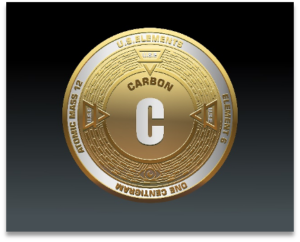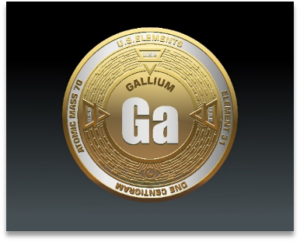As we reach the fourteenth installment in our critical minerals series, we turn our attention to fluorspar—an often-overlooked yet indispensable mineral that underpins industries ranging from steelmaking to high-tech defense applications. Fluorspar is the primary source of fluorine, an element essential for the production of aluminum, refrigeration gases, lithium-ion batteries, and even uranium enrichment. Without fluorspar, many of the materials that drive modern innovation and infrastructure would be far more difficult and costly to produce.
Why the U.S. Needs It
Fluorspar plays a vital role in multiple industries, particularly in steel manufacturing, where it acts as a flux to lower the melting point of raw materials. It is also essential for producing hydrofluoric acid, a precursor to numerous chemicals, including those used in semiconductor manufacturing, pharmaceuticals, and non-stick coatings. The defense sector relies on fluorspar-derived compounds for missile guidance systems, aerospace components, and nuclear fuel processing. Given its broad applications, securing a stable fluorspar supply is crucial for maintaining industrial strength and technological competitiveness.
Where It’s Found Domestically
Despite its importance, the U.S. has minimal domestic fluorspar production, with most of the supply coming from imports. Historically, mines in Illinois, Kentucky, and Colorado have produced fluorspar, but these operations have declined due to competition from foreign producers. However, recent initiatives are seeking to revive domestic production, particularly in Utah and Nevada, where fluorspar deposits remain untapped.
Economic Realities
Fluorspar is classified as a critical mineral because the U.S. relies entirely on imports, with the majority coming from Mexico, China, and South Africa. This dependence makes the U.S. vulnerable to supply chain disruptions and price fluctuations. The global market for fluorspar is growing, driven by demand for lithium-ion batteries, green technologies, and semiconductor manufacturing. As these industries expand, securing a steady fluorspar supply will become even more critical.
Processing and Technological Innovations
Fluorspar is typically processed through flotation techniques to increase its purity before being converted into hydrofluoric acid or used directly in metallurgical applications. Recent advancements in recycling technologies are exploring ways to recover fluorine from industrial waste streams, potentially reducing reliance on newly mined fluorspar. Research is also underway to develop alternative materials that can replace fluorspar in some applications, though no viable substitutes have yet been found for its critical uses.
Abundance and Waste Recovery Potential
Fluorspar occurs naturally in the Earth’s crust at an estimated 330 parts per million, making it more abundant than many other critical minerals. However, economically viable deposits are less common, and mining fluorspar can be challenging due to environmental regulations and extraction costs. The potential for recovering fluorine from industrial byproducts offers a promising avenue for increasing supply without increasing mining activity.
Time to Market
Bringing new fluorspar production online requires significant investment in mining, processing infrastructure, and regulatory approvals. The time frame from exploration to commercial production can take several years, making it difficult to quickly respond to supply shortages. However, with increased government and industry focus on mineral security, new projects in the U.S. may accelerate the timeline for domestic production.
Current and Future Applications
Beyond its traditional role in steelmaking and chemical production, fluorspar is finding new applications in clean energy and high-tech industries. Fluorine-based compounds are essential for lithium-ion battery production, which is critical for electric vehicles and renewable energy storage. The growing semiconductor industry also relies on fluorspar-derived chemicals for chip manufacturing. Future advancements in fluorine chemistry could unlock even more applications, reinforcing fluorspar’s strategic importance.
Impact on Everyday Life
Fluorspar’s influence extends to many aspects of daily life, from the aluminum in beverage cans to the fluoride in drinking water and toothpaste. It is also a key ingredient in refrigerants that keep our homes and food storage systems cool. Without fluorspar, many modern conveniences and essential technologies would be significantly impacted.
Consequences of Supply Shortages
A shortage of fluorspar could disrupt a wide range of industries, leading to increased costs for steel, aluminum, pharmaceuticals, and electronics. The U.S. defense sector, which relies on fluorine-based materials for critical technologies, could also face challenges in maintaining production capabilities. Ensuring a reliable fluorspar supply is vital for economic stability and national security.
Import Dependence
The U.S. currently imports 100% of its fluorspar, with Mexico and China as the top suppliers. This heavy reliance on foreign sources poses a significant risk, particularly in the face of geopolitical tensions and supply chain vulnerabilities. Increasing domestic production and investing in alternative sourcing strategies are key to reducing this dependence.
The Path Forward
To secure a stable fluorspar supply, the U.S. must prioritize domestic mining projects, invest in recycling technologies, and explore innovative recovery methods. Strengthening supply chains for this critical mineral will be essential in supporting industrial growth, technological advancement, and national security.
As we continue our journey through America’s critical minerals, fluorspar stands as a prime example of how mineral security directly impacts economic and technological progress. Stay tuned for the next installment in our series, where we delve into another key mineral shaping America’s future.





